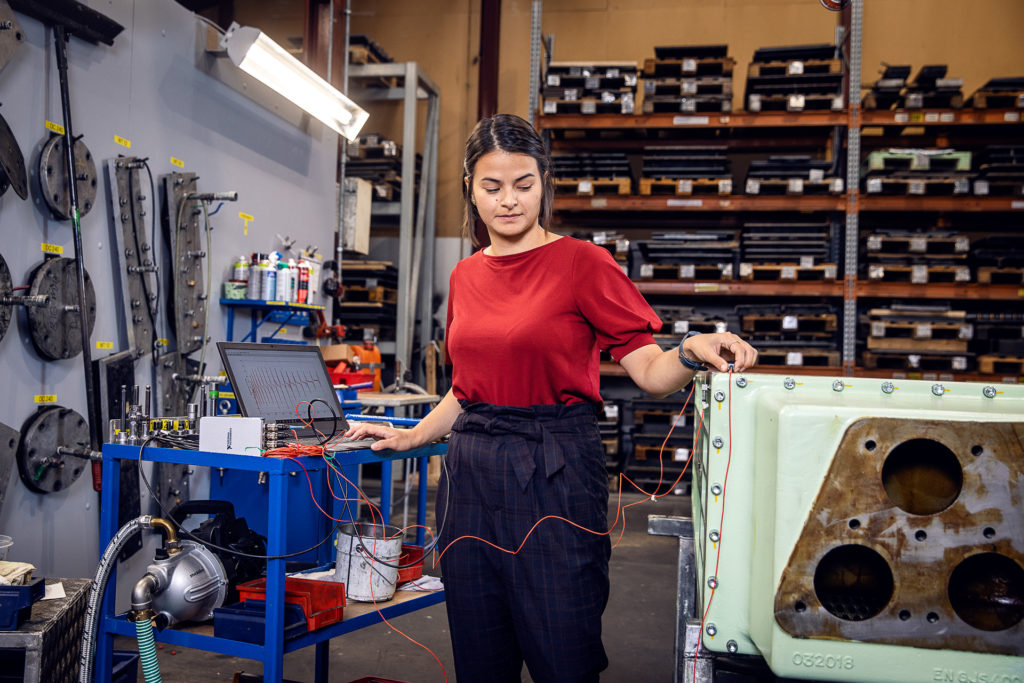Academia meets industry… and vice versa. Denmark holds a strong position in the delicate art of making theory and practice blend blood – ultimately benefitting both academic societies and private companies as well as the world outside.
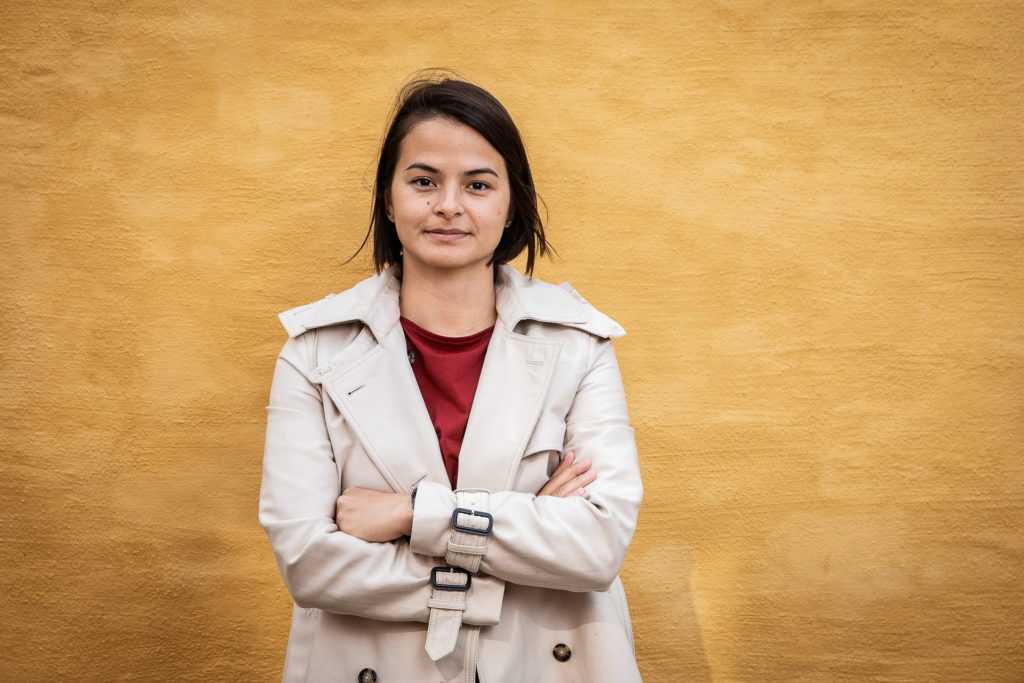
Photo: Anders Trærup, freelance photographer
“Arriving in January was… Well, how can I phrase it? It was cold and dark! But for me positive as well. Coming to Denmark I was surprised by the hospitality and spaciousness of my new surroundings. I truly appreciate the nature at the fjord… it gives me the opportunity to live, work and study in a peaceful manner. To enjoy the privilege to disconnect”.
Milena Watanabe Bavaresco (28) moved to Denmark in January 2020. She travelled from a summery Brazil in the southern hemisphere to the western part of Jutland, at that time of the year a wet and windy peninsula region even by many Danes considered to be part the outskirts of the tiny northern Kingdom.
Significant new knowledge
The fellow European Industrial PhD project between the University of Southampton and Vestas aircoil involves four young talents from abroad. The project is funded by the EU Horizon program. The project is planned to last four years with a 50/50 split between studies in the UK and Denmark. The PhD’s have weekly online meetings with their university supervisor and biweekly meetings with their industrial supervisor. At Vestas aircoil the industrial supervisor is Claus H. Ibsen, Master of Science in Engineering (M. Sc. Eng.) and PhD himself.
A PhD (Doctor of Philosophy) is a 3-year postgraduate doctoral degree, awarded to students who complete an original thesis offering a significant new contribution to knowledge in their subject. PhD qualifications are available in all subjects and usually the highest level of academic degree a person can achieve.
Time to shine
Amongst her travel documents Milena brought a contract signed by the University of Southampton in England and Vestas aircoil in Denmark. The university is ranked Top 100 globally. On the website the university flash its payoff: “This is your time to shine” with a promising ambition to “develop critical thinking and independent learning skills that are essential for future leaders and decision makers”.
Currently, Milena shines at Vestas aircoil. Supported by funding from the EU Horizon program she splits her PhD time equally between the UK and Denmark in a project planned to last four years.
Having a master’s degree in Engineering Milena now has the ambition to succeed a PhD working closely together with her PhD-colleague Kevin focusing on their studies in vibrations.
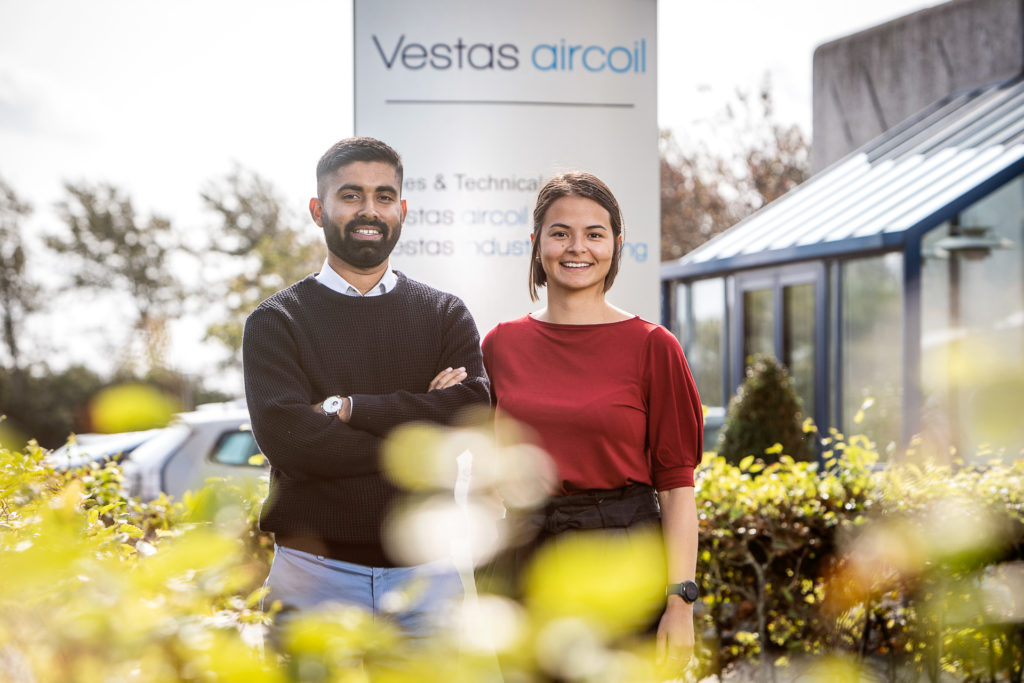
Minimize the risk of failures
“Vibrations cause severe problems in many industries. If we want to find solid and lasting solutions, we must understand the challenges first… and we need to start by the fundamentals. If we realize the structures and comprehend the nature of vibrations, I believe we offer ourselves the opportunity to solve most of the troubles as well”.
Regardless of the structure itself – a building, an aircraft, a car, wind turbines, a vessel or any other structure exposed to vibrations – over time these periodic movements may cause failures that have the potential to be very expensive to the company that manufactures, maintains or has the ownership of that structure.
“I find vibrations a very interesting topic due to the amount of internal and external factors that play a significant part: materials, geometry, mounts and connections just to mention a few. To build strong structures capable to withstand years of wear and tear the complexity of vibrations must be recognized and fully taken into consideration in their design process”.
Supporting 65,000 researchers
With the Marie Skłodowska-Curie actions (MSCA) the EU Commission is supporting the career development and training of researchers. The MSCA are expected to finance around 65,000 researchers, including 25,000 doctoral candidates. The EU target is to spend 3% of EU GDP on research and development by 2020. At the MSCA start in 2014 at least 1 million new R&D jobs had to be established.
By funding excellent research and offering attractive working conditions, the MSCA offer high quality professional opportunities open to researchers of any age, nationality or discipline.
The specific objectives of the Marie Skłodowska-Curie Innovative Training Networks (ITN) are:
1. to train a new generation of creative, entrepreneurial and innovative early-stage researchers able to face current and future challenges and to convert knowledge and ideas into products and services for economic and social benefit
2. to raise excellence and structure research and doctoral training, extending the traditional academic research training setting, incorporating the elements of Open Science and equipping researchers with the right combination of research-related and transferable competences
3. to provide enhanced career perspectives in both the academic and non-academic sectors through international, interdisciplinary and intersectoral mobility combined with an innovation-oriented mind-set.
Finding new ways to test
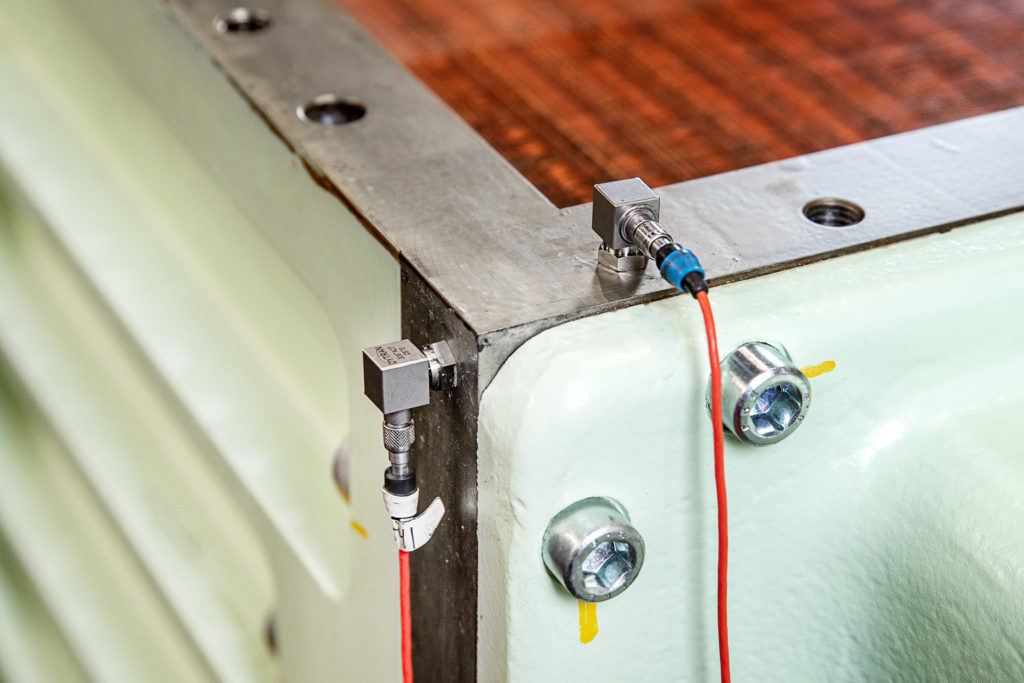
The complexity of vibrations may appear obvious for the Vestas aircoil charge air coolers mounted deep in the machinery next to a double MAN modern two-stroke diesel engine delivering a total of 86,000 BHP onboard a majestic Triple E container ship from Maersk Line.
“The complexity, however, may apply to much simpler constructions. Dynamic properties are intrinsic to all these objects around us,” says Milena spreading her arms at the meeting table in the office where we talk. “Combined with certain loadings, these properties can determine the success or failure of a structure in terms of vibrations”.
“My work focuses on researching new ways of testing structures and implementing existing methods to make them useful in both a Vestas aircoil setting and to other industries as well”.
Vestas aircoil is a market leader in marine and industrial cooling systems. For decades the company has faced the fact that one of the main challenges in cooling systems is actually the cooling itself: bringing temperatures from 225 degrees Celsius to 35 with air travelling within a cooler that is only half a meter wide is highly complex and only possible with air exposed to a humongous cooling surface cramped into the cooler. Despite having the size of a wardrobe, a Vestas aircoil cooler may easily contain a cooling surface of 1,000 square meters. Such massive differences in temperatures from input to output within the same structure, however, expose materials and components to extreme conditions.
Pioneers for six decades
Founded in the 1950s Vestas aircoil has been a market leading manufacturer of marine and industrial cooling products ever since. Vestas built the first marine diesel engine charge air cooler in the world for Burmeister & Wain in 1956. The company is headquartered in Lem, a small industrial town often associated with its blacksmith industry.
Until the 1980s Vestas aircoil was part of Vestas Wind Systems also located in Lem. Today, Vestas aircoil is owned by Genua. Vestas aircoil has 250 employees based in Denmark, Southern Europe and the Far East.
www.vestas-aircoil.com
The gamechanger
Having the opportunity to research and develop together with a world leading manufacturer in marine diesel engine and industrial cooling systems Milena is thrilled with the future perspectives in 3D printing:
“It is a technology that lay out new land for us to discover. In traditional materials and processes we experience many restrictions. However, 3D printing allows us to change the name of the game… at a microscopic scale. We can build our structures with innovative geometry and we can place different materials in strategic positions. That allows us to manufacture goods with a built-in vibration control strategy that is sophisticated in concept, yet simple in operation”.
The introduction of new fuels such as biofuels and hydrogen are also keeping engineers busy with new designs, calculations and re-designs as we prepare engines for a greener and more climate friendly future.
Practice what they preach
Another day at the office is often working hours with Milena on the constant move between physical laws and engineering drawings at her computer desk and real life testing and experiments in the probation area in a corner of the Vestas aircoil production facility.
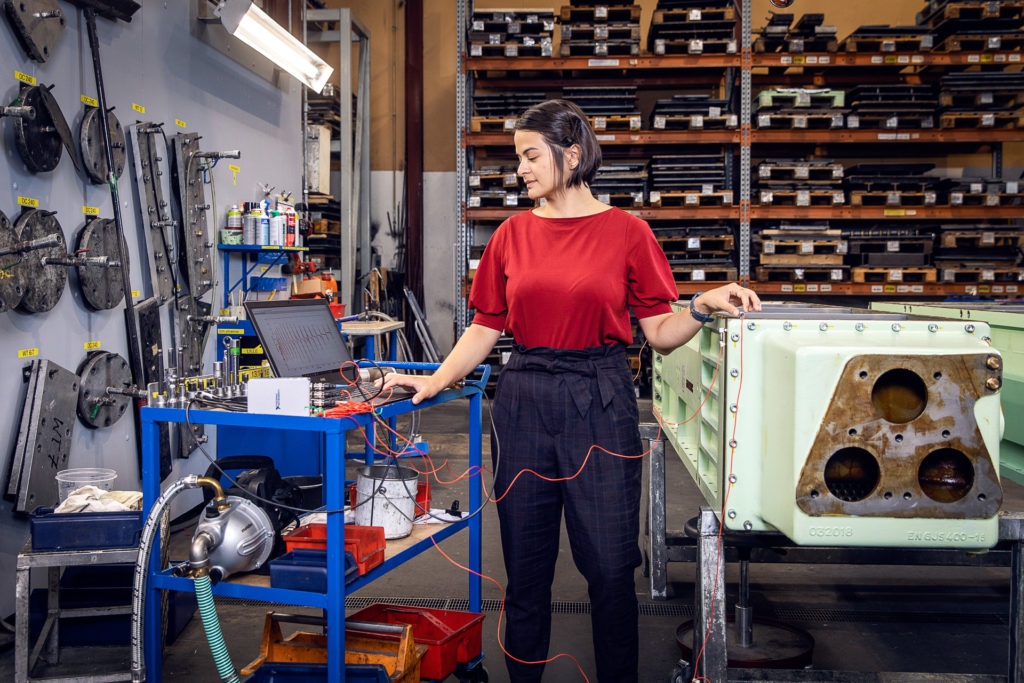
“We conduct these experiments to test, understand and document how materials react to temperatures and vibrations making us able to transform theory into practice and harvest new knowledge based on the processes. The genuine passion and interest in my PhD work makes it highly encouraging for me to be with Vestas aircoil. Most companies would probably flash an interest in bridging academia and industry… at Vestas aircoil they quite simply practice what they preach”.
Fell in love with research
It’s Friday afternoon. Lunch – the traditional Danish rye bread with cold cuts – is over. Weather outside is quite contrary to Milena’s arrival half a year ago. A high pressure weather situation pumps hot and dry air from the European continent to Scandinavia. Temperatures are 30 degrees Celsius. Had it not been for a knee injury Milena would probably play tennis this weekend, but she plans to go to the beach instead.
“Going to the beach in Denmark is quite different, though. In Brazil we are much noisier and extroverted. In Denmark people are rather understated and relaxed in many aspects. I had no idea what to expect when I first went here. I never met a Dane before moving here in January. But I like the people and the country… I really do”.
Summer holidays are closing up. Covid-19 travel restrictions prevent Milena from visiting family in Brazil. Instead she will spend three weeks in August together with her cousins in Ireland and visit her boyfriend in the UK.
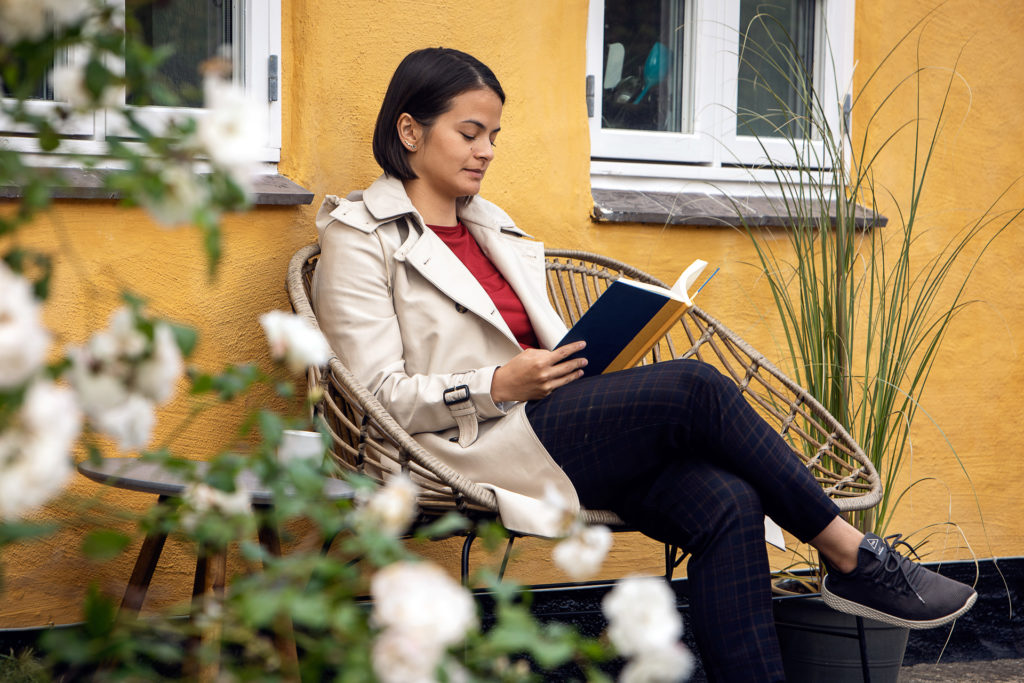
Looking into the future beyond her PhD Milena is less certain what territories she will explore.
“During my master’s degree in vibration control I simply fell in love with research. Trying to tackle what is unknown to me and sometimes even others definitely motivates me. If my future work will be in academia or the industry, however, it is hard for me to tell. I do not have a fixed goal… I am ready to walk in any direction my curiosity dictates”.
Atul: “Finding trade-offs is my trade”
Talha: “Failure is what I predict”
Kevin: “Now I see structures everywhere”


